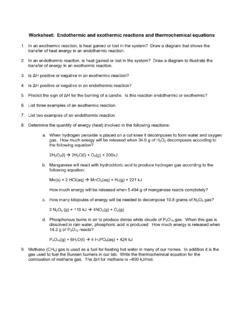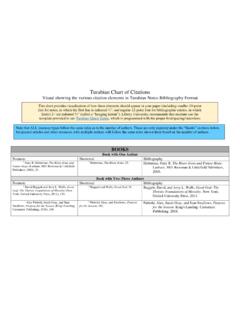Transcription of POLITICAL PARTIES IN THE UNITED STATES, 1788–1840
1 1790180018101820183018121816178817921796 180418081824182818321836 During the 1790s, two PARTIES began to form around di erences of opinion within Washington s cabinet. Federalists, behind Secretary of the Treasury Alexander Hamilton, supported a strong central government that could promote manufacturing and commerce. Supporters of Secretary of State Thomas Je erson, who began to call themselves Democratic-Republicans, believed in small central government and an agricultural the Constitution was rati ed, there were no POLITICAL PARTIES . George Washington was elected without election of 1800 was a critical moment in American democracy the rst peaceful exchange of power between two Democratic-Republicans gradually adopted Federalist programs, including support for manufacturing and commerce and a stronger central opposed the War of 1812, and the American victory cost them 1820, the Federalists could no longer eld a Presidential Monroe won re-election without opposition, and the Era of Good Feelings 1824, four men ran for President, all calling themselves Democratic-Republicans.
2 Andrew Jackson won the most votes, but no candidate won a majority of the electoral vote. The election went to the House of Representatives, which chose John Quincy 1828, supporters of Andrew Jackson had begun calling themselves Democrats. They wanted small government, and they opposed trade protection, national banks, and paper money. Supporters of John Quincy Adams, calling themselves National Republicans, wanted a strong central government that would support internal improvements and promote New York and New England, opposition to Jackson organized the Anti-Masonic Party, which feared the role of Freemasons in government. In 1832, they held the rst presidential nominating convention in the E M O C R AT I C - R E P U B L I C A NF E D E R A L I S TD E M O C R AT I CN AT I O N A LR E P U B L I C A NA N T I - MA S O N I CW H I GJohn Quincy AdamsThomas Je ersonJohn AdamsGeorge WashingtonGeorge WashingtonJohn AdamsThomas Je ersonThomas Je ersonJames MadisonJames MadisonJames MonroeJames MonroeCharles PinkneyCharles PinkneyDeWitt ClintonRufus KingHenry ClayWilliam CrawfordAndrew JacksonAndrew JacksonJohn Quincy AdamsAndrew JacksonHenry ClayWilliam WirtMartin Van BurenWilliam Henry HarrisonHugh Lawson WhiteDaniel WebsterWillie Person MagnumPOLITICAL PARTIES IN THE UNITED STATES.
3 1788 1840 POLITICAL PARTIES have shifted many times in 220 years of national politics. Even when PARTIES have kept the same names for long periods, their issues, principles, demographics, and regional support all change over chart shows the evolution of POLITICAL party systems in the since 1789. Each party system is a roughly de ned time period in which two major POLITICAL PARTIES , each with fairly consistent supporters and beliefs, dominated the POLITICAL colored lines represent organized PARTIES that had a signi cant impact on national politics, electing members of Congress or receiving more than 1% of the vote for President. Where the lines merge and split, PARTIES split or party a liations changed dramatically in a short period of time.
4 Presidential candidates are also listed for each party, with the winning candidate in bold:Winning CandidateCandidate Copyright LEARN NC 2009. May be reproduced for noncommercial purposes so long as attribution is provided, under the terms of the Creative Commons Attribution-Noncommercial-Share Alike license. Visit us on the web at






